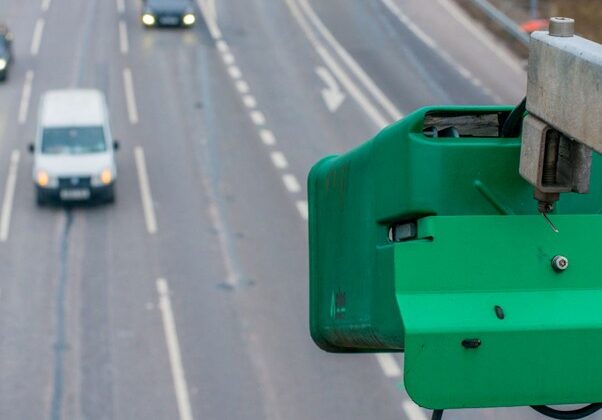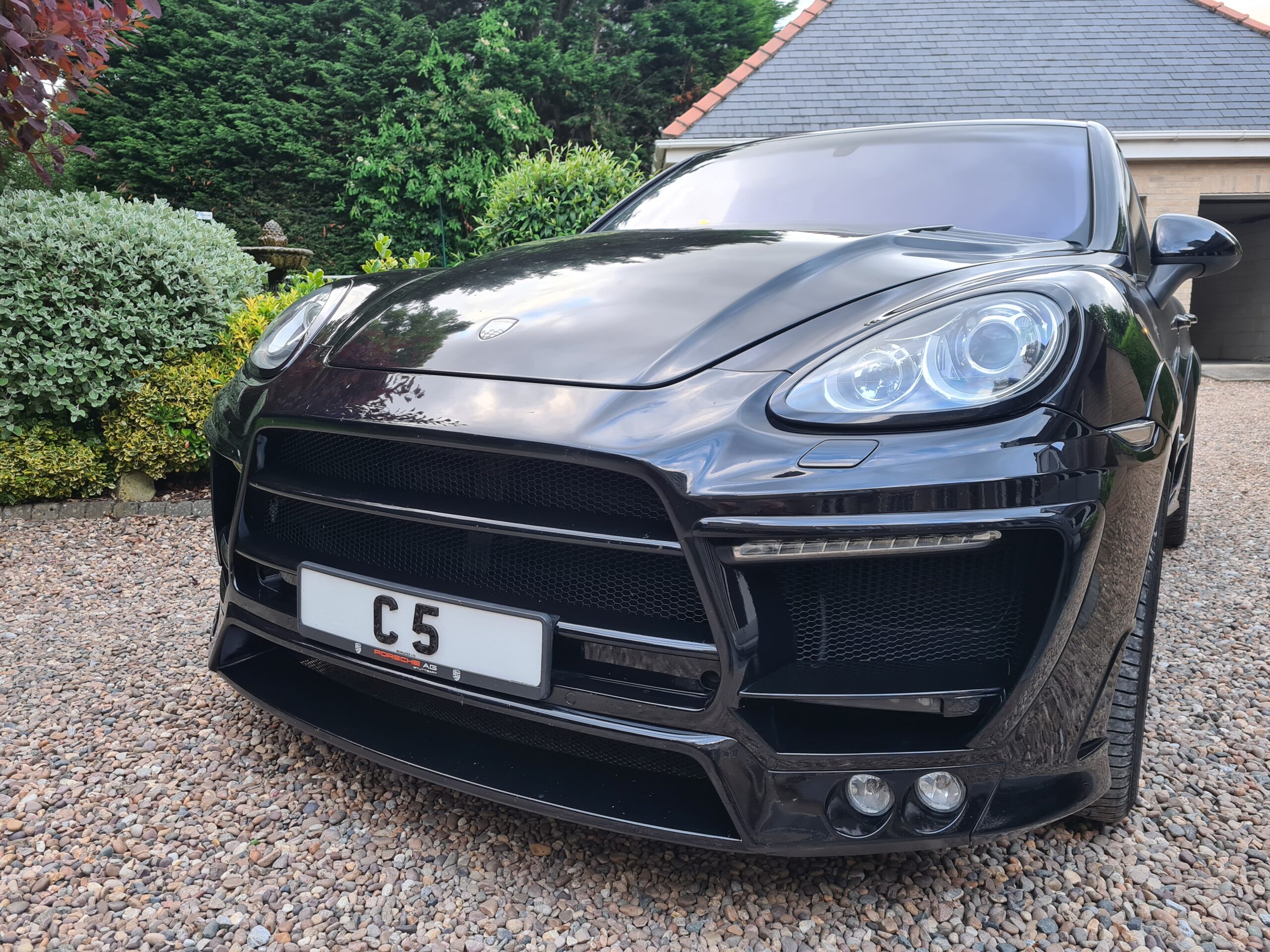
In the UK, there are strict guidelines regarding what colour number plates are legal on the road. Number plates have a distinctive colour scheme: white at the front and yellow at the rear. This colour combination is not simply a matter of aesthetics, it serves an important practical purpose.
Number Plate Colour Rules
Prior to 1979, UK number plates were black with silver or white lettering. This system was replaced by the current white and yellow scheme. While the black plates remained legal until 2012, you’re unlikely to see them on UK roads today.
Military vehicles still retain the black plates with white or silver lettering. These plates are made from non-reflective materials to avoid becoming targets for laser-sighted weapons in hostile environments.
The primary reason for the white and yellow number plates is to aid other drivers in quickly determining whether a vehicle is approaching or moving away from them. The white front number plate, with its black characters, offers the best visibility for oncoming drivers.

The use of yellow for the rear plate also has a functional basis. While white offers optimal readability for black characters, yellow is considered the next clearest colour for this purpose. By using yellow for the rear plate, drivers following a vehicle can easily read the registration number.
The DVLA enforces strict regulations regarding the colour and format of number plates, with penalties for non-compliance. These rules cover aspects such as spacing, size, font, and the prohibition of patterns on the plates.
There are a number of rules surrounding number plates in the UK, with non-compliance and the colours of the plates, they must also adhere to rules regarding:
- Spacing
- Size
- Margins
- Font
Plates cannot feature patterns. A flag can be added if desired.
Why Are Number Plates White and Yellow?
The colour scheme of white at the front and yellow at the rear serves a functional purpose. This setup helps other drivers instantly recognise the direction a vehicle is travelling. When viewing a vehicle from the front, the white plate is clearly visible with black characters for optimal readability. At the rear, the yellow plate, combined with black characters, ensures visibility for following drivers.
All modern UK number plates are required to use reflective materials. Reflectivity plays an important role in increasing visibility for drivers and law enforcement, especially at night. While the front white plate and the rear yellow plate both use reflective materials, the DVLA prohibits reflective materials on black plates for military and vintage vehicles to preserve their non-reflective, original design.
Why these specific colours were chosen:
- Visibility for Oncoming Drivers: The white front plate with black characters provides high contrast, making it easier for oncoming drivers to see and read the registration number. White is highly reflective, which also helps improve visibility in low-light conditions.
- Readability from Behind: The yellow rear plate with black characters is also chosen for readability. While white provides the best contrast for black characters, yellow is nearly as effective and still provides sufficient contrast, even in poor weather conditions.
- Distinguishing Directions: The two-colour system allows drivers and pedestrians to quickly determine the orientation of the vehicle, enhancing safety in scenarios such as parking or making U-turns.
Regulations Governing Number Plates
In the UK, number plates are regulated by the Driver and Vehicle Licensing Agency (DVLA), which enforces strict guidelines for size, colour, and layout to ensure uniformity and readability. Non-compliance with these rules can result in fines, failed MOT tests, and even police warnings. Let’s review some of the key regulations:
- The spacing between characters must adhere to DVLA standards. Incorrect spacing can make it difficult to read the plate and may be viewed as an attempt to obscure the number for surveillance cameras.
- Both the size of the characters and the margins around them are strictly regulated. The correct font size and adequate margin ensure that the plate is easily legible from a distance.
- Only specific fonts approved by the DVLA are allowed on UK number plates. This regulation aims to prevent the use of stylized fonts that may be difficult to read or could distort the characters, potentially hindering identification by automated recognition systems.
- Number plates cannot feature patterns, graphics, or any decorative elements except for a flag. These restrictions are in place to prevent any visual interference with the plate’s readability.
- While number plates must conform to a standard design, drivers are permitted to add a flag to their plates, typically representing the UK, Scotland, Wales, or the European Union. Flags are optional, but they must not obstruct the legibility of the registration.
Consequences of Non-Compliance
Failure to comply with the DVLA’s number plate regulations can lead to various penalties, including:
- Fines: A non-compliant number plate can result in a fine of up to £1,000.
- MOT Failure: Vehicles with illegal number plates may fail their MOT, requiring the owner to replace the plates before the car is allowed back on the road.
- Potential Legal Consequences: Repeated non-compliance or intentional obscuring of a registration plate can lead to further legal consequences, especially if it is perceived as an attempt to avoid surveillance or detection.
Influence on Law Enforcement and Automated Recognition Systems
The standardised colours and reflective material of UK number plates also benefit law enforcement by simplifying the process of vehicle identification. Automated number plate recognition (ANPR) systems, commonly used in police vehicles and on motorways, rely on high-contrast, reflective plates to scan and identify vehicles. This technology is essential for spotting unlicensed, uninsured, or stolen vehicles. The standardisation of plate colours across all vehicles in the UK ensures ANPR systems work efficiently and accurately, contributing to crime prevention and law enforcement.

The reflective properties are optimised for infrared cameras, which operate best with high-contrast images. By enforcing a standardised design, the UK ensures that its road monitoring systems function effectively, providing an additional layer of safety and security on the roads.
For guidance on legally compliant and stylish number plates, we have a wide range of number plates on our website, from: private to cherished, dateless plates to name plates, and plenty more number plates for you to find exactly what you’re looking for.
Get in touch with our team today for more information and guidance.

Jon Cherry is a Director of leading personalised number plate dealer Regplates.com. Jon has over 25 years industry experience handling some of the most expensive plates ever sold with many high profile and celebrity clients. Active since 1991 in the number plate industry, Jon is currently Chairman of the Cherished Numbers Guild, a trade body representing number plate dealers in the UK. Jon has written many articles on the industry and insight into the future of numberplates and the market as a whole.




